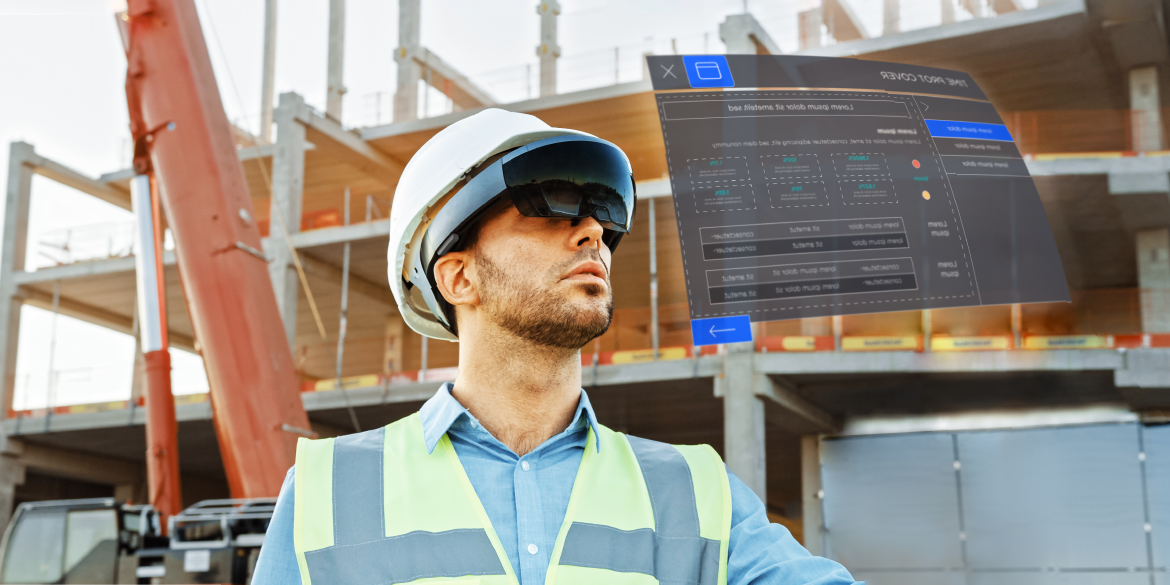Making augmented reality for field services a success
28 Nov 2022
 5 mins
5 mins

For companies providing field services, their brand reputation is tied directly to the quality of the service they deliver. In recent years, customer demands have been evolving – and field services need to change to keep up. In response, not only are digital workflows replacing paper-based ones, but training, diagnostics and maintenance in the field are also being transformed by augmented reality (AR) and virtual reality (VR). And this uptake is happening at pace: while 60% of service leaders were evaluating AR solutions in 2017, in 2021, nearly 80% were planning new or extended use of AR.
What is AR/VR?
You’ve probably heard of augmented and virtual reality before – but what’s the difference between the two?
Virtual reality completely replaces a given real-world environment with a simulated one. This requires specialized hardware, such as a headset or a room that displays the artificial world; and input devices, such as motion controllers or wired gloves, so that people can interact with it. While many people instinctively associate VR with gaming, it has many highly beneficial industry applications as well – such as enabling surgeons to practise operations at no risk to patients, or facilitating safe training in mining, or any sector with a risk of injury.
On the other hand, augmented reality is an interactive experience in which computer-generated content is superimposed onto the real world. Unlike VR, it doesn’t require purpose-built hardware, often relying solely on a phone or tablet, and it’s slowly becoming part of our everyday lives. More and more retailers are integrating AR with their websites and apps so that customers can view a product in their space through their phone or tablet camera. AR can show customers a pair of shoes on their feet, or paint on their walls, or a chair in their room before they buy.
AR images don’t have to be static, either: Google incorporates 3D AR objects, including animals, into its search results. You could search for ‘hedgehog’, for example – and then watch one burrow into your carpet, or zoom in on it and examine it from any angle.
Sometimes AR becomes immersive enough that the line between it and VR becomes blurred. This is occasionally referred to as mixed reality (MR).
How does AR/VR enhance field services?
When it comes to field services, AR/VR is delivering significant value in two major areas: training and diagnostics.
Training
With AR/VR, training becomes immersive, convenient and comprehensive, while being safer than ever. It enables:
- Better product visualization: Like the 3D AR hedgehog from Google, the trainee can view and interact with a product in ways that physical objects don’t allow – such as easily inspecting a very large machine from any angle, or zooming in on a small part for a more detailed look.
- Scalable training, available anywhere, anytime: Once you leave physical constraints behind and embrace the virtual, training can be carried out anywhere, even across multiple locations. All your trainees need is the right device and a secure internet connection. Without the size limitations of a classroom or the need for travel, AR/VR-based training can be delivered at scale. Plus, it can be available 24/7 for self-service learning.
- A safe training environment: When training is virtual, there’s no risk of injury to the participants or damage to any products or parts being used for training.
Diagnostics
AR/VR opens up more reliable, safer ways of working and collaborating in the field – for technicians, subject-matter experts, and even customers. It enables:
- Easier troubleshooting: Technicians will be able to diagnose some faults by viewing a virtual working version of the product superimposed onto the real one to identify the difference between the two.
- Improved safety: Even an experienced technician runs the risk of injury when assessing damaged machinery up close. AR/VR helps the technician minimize contact with the product when identifying the problem.
- More efficient collaboration: On-site technicians can share what they’re seeing, along with AR overlays, in real time or in a video, with remote subject-matter experts, who can then guide them through the procedure without incurring delays and travel costs.
- Fewer site visits: Similarly, customers can use AR/VR to show remote technicians the problem, with accompanying overlays, giving the technician a more accurate understanding of the issue. The technician can then either talk the customer through the fix remotely, if it’s simple, or gather all the information they need to make sure they’re able to fix the product on their first visit.
Overcoming barriers to implementing AR/VR
While the value of AR/VR for field services is clear, successfully implementing it can be a challenge. It requires proper management of the underlying technical information to be delivered to the technicians in AR/VR.
This technical knowledge (instructions, annotations, procedural steps, and so on) is always changing as new product versions and instructions are released. The result is high volumes of content in constant need of updating and managing across multiple products and publishing channels. With traditional, ‘unstructured’ content – that is, content stored as entire, formatted documents, such as Word files or PDFs – updates are daunting and expensive, and publishing to an AR/VR channel is impossible.
This is where ‘structured’ content comes in. Structured content is information broken down into small, reusable, topic-based chunks, known as ‘components’. All components are managed from one central location – usually a component content management system (CCMS) – for all channels.
Structured content solves the information management barriers to adopting AR/VR by enabling you to:
Keep information up to date
If updates aren’t published quickly across all channels, AR could overlay old, inaccurate information on new machinery – potentially resulting in further damage, or even injury.
When content is unstructured, making a change involves tracking down and updating every document that contains the relevant information. This is time-consuming and unreliable, with some documents bound to slip through the cracks.
With structured content, you make the change just once, by updating the component that contains the relevant information. This change to the single, authoritative source can then automatically be replicated everywhere that component is used.
Make information findable
Even up-to-date, accurate information is of little use if it’s not findable. Your technicians need to be able to quickly search for or navigate to the content they need.
In unstructured content, information storage isn’t granular enough to allow for detailed search filtering, leaving users to wade through a sea of irrelevant results.
In structured content, the components are tagged, allowing technicians to quickly narrow down their search results by filtering for content types or topics. And in a CCMS that employs semantic AI, the search function is trained to understand the user’s intent and return even more relevant results.
Make information accessible offline
Field service engagements often occur in remote or underground areas with limited internet access, so the information to be pushed to the AR/VR platform needs to be available offline.
With the right CCMS, you’ll be able to provide offline access to information for full mobility.
Publish information on any device
AR relies on a portable device with a camera – which could be a phone, a tablet or, for hands-free convenience, glasses or a similar wearable – meaning you need to be able to publish the content to any of these devices.
When a content management system holds information in predefined formats such as Word documents and PDFs, the number of channels you can publish to are limited, and exclude AR/VR. But a component content management system can be ‘headless’, which means it’s not tied to a particular mode of presentation. It stores its content in components free of any formatting, allowing it to be published in any format, to any device.
Making augmented reality a success with Tridion Docs
As a headless CCMS and intelligent content management platform, Tridion Docs gives field operations the technological foundation to adopt AR/VR to enhance their training and diagnostics. It helps you:
- Create an easily updatable single source of truth for field service content
- Quickly tag and search for content thanks to its semantic AI capabilities
- Automatically get the right information to the right place, in the right format – on-demand and offline
If you’re attending Field Service Europe on 30 November 2022 in Amsterdam, meet with our experts and try augmented reality first-hand to see how it can help elevate your field services for the future.
